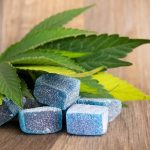THCA, or tetrahydrocannabinolic acid, is a compound found in cannabis plants that has been gaining attention for its potential health benefits. While THC is the more well-known psychoactive compound found in marijuana, THCA is actually the precursor to THC and does not have any psychoactive effects.
When cannabis plants are harvested, they contain very little THC and instead have high levels of THCA. Through a process called decarboxylation, which involves heating the plant material to a specific temperature over time, THCA is converted into THC. This is why smoking or vaping cannabis flowers can produce psychoactive effects – because the heat applied during consumption converts THCA into THC.
However, some people prefer to consume cannabis without experiencing the psychoactive effects of THC. This is where thca flowers come into play. By carefully controlling the temperature during cultivation and processing, growers can preserve high levels of THCA in their plants while minimizing the conversion to THC.
THCA flowers offer a unique alternative for those seeking the potential health benefits of cannabinoids without getting high. Some research suggests that THCA may have anti-inflammatory properties and could help with conditions such as arthritis, chronic pain, and autoimmune disorders.
In addition to its potential health benefits, THCA also offers an interesting sensory experience for consumers. The terpene profile of THCA flowers can be quite different from that of traditional cannabis strains high in THC. Terpenes are aromatic compounds found in plants that contribute to their flavor and aroma.
THC-dominant strains often have a strong skunky or diesel-like scent due to their terpene profile. In contrast, THCA flowers may have a more subtle aroma with hints of citrus, pine, or floral notes depending on the specific strain.
The science behind cultivating high-quality THCA flowers involves careful attention to detail at every stage of production. From selecting genetics with high levels of THCA to optimizing growing conditions such as light intensity and nutrient levels, growers must be meticulous in their approach.
Harvesting and processing techniques also play a crucial role in preserving THCA content. Proper drying and curing methods help maintain potency while ensuring that terpenes are preserved for optimal flavor profiles.
Overall, from bud to bloom, there is much more than meets the eye when it comes to producing top-quality THCA flowers. As interest in non-psychoactive cannabinoids continues to grow among consumers looking for natural alternatives for wellness purposes, we can expect even more innovation and research in this exciting field of cannabis science.











